Active during the 16th century, Titian was an Italian artist who is considered among the greatest painters of all time. He was a versatile painter, adept with portraits, landscape backgrounds, and mythological and religious subjects. His use of color and painting methods, particularly his emphasis on the touches of the brush and even sometimes of fingertips, exercised profound influence on the future generations of Western art. Know about the art of Titian by studying his 10 most famous paintings.
#10 Equestrian Portrait of Charles V
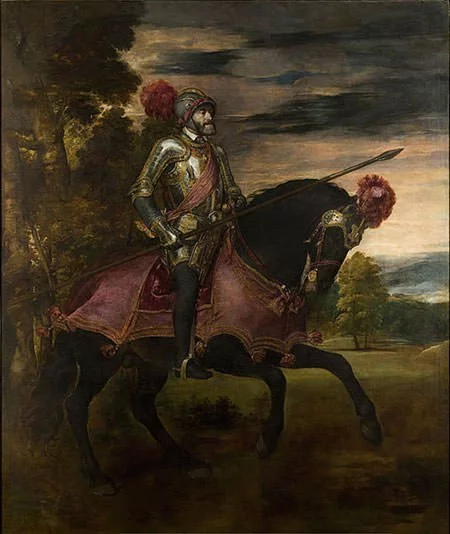
| Location: | Museo del Prado, Madrid, Spain |
| Year: | 1548 |
Titian was a masterful portrait-painter and created numerous masterpieces in portraiture. This portrait was designed to commemorate the victory of Charles V, the Holy Roman Emperor, over the Protestant armies at the Battle of Muhlberg in 1547. The skillfully depicted armor which shines brightly, brilliant use of color and the superb sunset landscape all contribute to make it one of the masterpieces of all time. Such was the impact of the painting that it established a new genre, that of the grand equestrian portrait.
#9 Pesaro Madonna
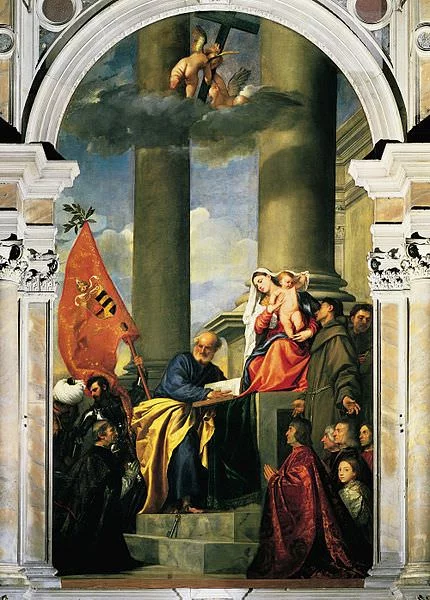
| Location: | Santa Maria Gloriosa dei Frari, Venice, Italy |
| Year: | 1526 |
Also known as Madonna di Ca’ Pesaro, this painting was commissioned by Jacopo Pesaro, whose family acquired in 1518 the chapel in the Frari Basilica in Venice for which the work was painted. It shows its patron in a devotional pose, kneeling before the Virgin and presented to her by Saint Peter. The painting is perhaps the most studied work of Titian and in it the master established a classic formula which was followed by several later artists.
#8 Sacred and Profane Love
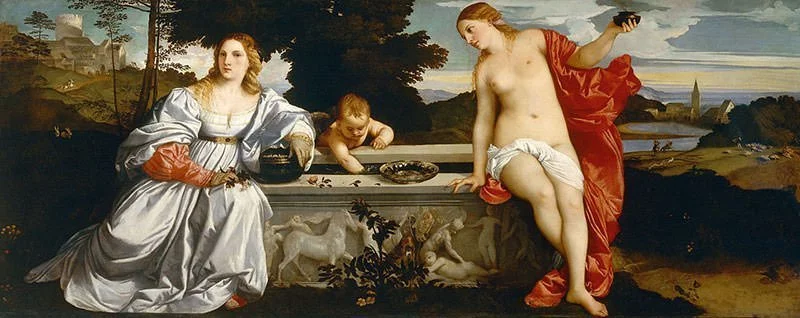
| Location: | Galleria Borghese, Rome, Italy |
| Year: | 1514 |
This painting was commissioned by Niccolo Aurelio, a secretary to the Venetian Council of Ten, to celebrate his marriage to a young widow named Laura Bagarotto. It shows two women, one richly dressed while the other naked, sitting on either side of a stone coffin with Cupid in the center, dipping his hand in water. The interpretation of the allegory is debated but it is generally considered that the two women are twin Venuses with one representing forces of nature while the other standing for eternal and divine love. Painted by Titian when he was twenty five, the painting is his most famous work from the early period.
#7 Pope Paul III and His Grandsons
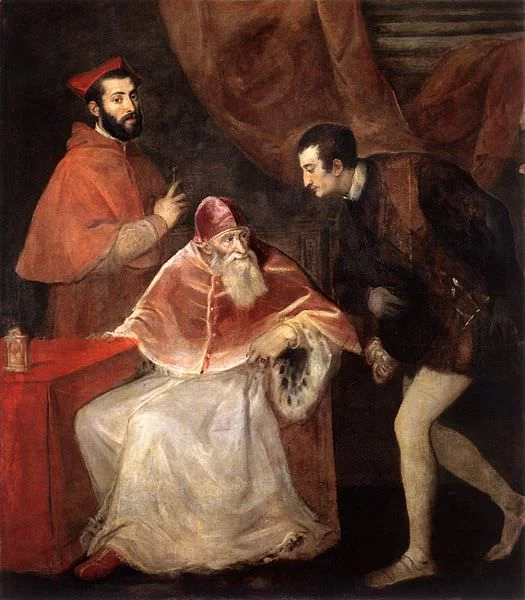
| Location: | Museo di Capodimonte, Naples, Italy |
| Year: | 1546 |
Commissioned by the Farnese family, this painting depicts the thorny relationship between Pope Paul III, born Alessandro Farnese, and two of his grandsons, Ottavio and Alessandro. The feeble pope, then aged 78, appears to turn suddenly in his chair toward Ottavio. It is widely accepted as one of the most politically difficult portrait commissions in art history and due to Titian’s masterful and subtle depiction of the complex reality in the family, the portrait is ranked as his best work in the genre and among his finest and most penetrating works.
#6 Danaë with Nursemaid
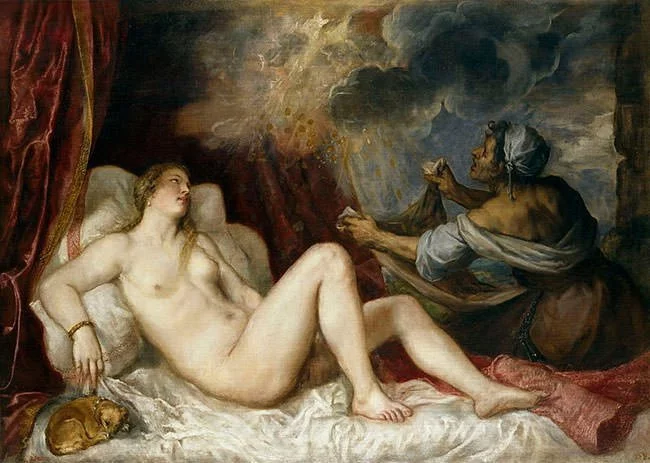
| Location: | Museo del Prado, Madrid, Spain |
| Year: | 1554 |
Danaë was a princess in Greek mythology whose father King Acrisius shut her up in a bronze chamber as it was prophesized that her son would kill him. However Zeus, the king of the Gods, desired her. He came to her chamber in the form of golden rain and impregnated her. Titian Danaë series is considered among his greatest works and this paining, which is also known as Danaë Receiving the Golden Rain, is the most famous of the series. In it, the magnificent nude Danae lies upon her couch as Jupiter descends to her in the form of golden rain, and her nursemaid rather amusingly attempts to catch the coins in her apron.
#5 The Rape of Europa
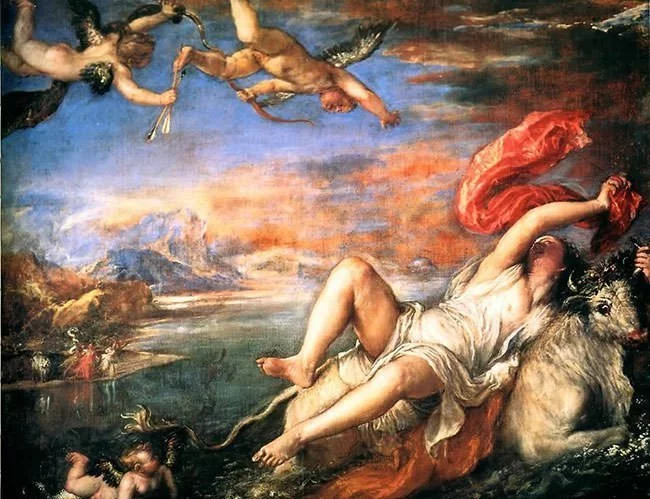
| Location: | Isabella Stewart Gardner Museum, Boston, U.S. |
| Year: | 1562 |
This painting is one of the seven famous canvases, the “poesies”, depicting mythological scenes from Ovid’s Metamorphoses that Titian made for Philip II of Spain during the 1550s. The painting depicts Jupiter, in the guise of a bull, snatching the Princess Europa and carrying her off to Crete over wine-dark seas. In contrast to the clarity of Titian’s early works, the painting is almost baroque in its blurred lines, swirling colors, and vibrant brushstrokes. Considered among Titian’s greatest works, The Rape of Europa, in a way, prefigured the work of Rubens and the Baroque.
#4 Venus of Urbino
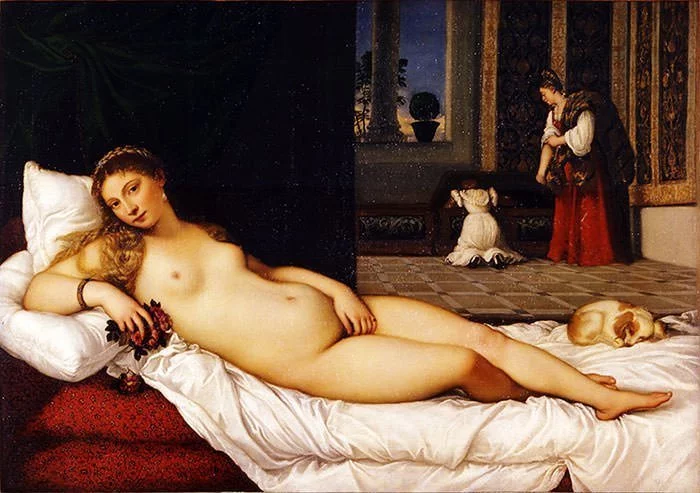
| Location: | Uffizi Gallery, Florence, Italy |
| Year: | 1538 |
This painting was commissioned by Guidobaldo Rovere, the Duke of Urbino. It shows the goddess Venus, reclining on a couch or bed in the surroundings of a Renaissance palace. The painting is unapologetically erotic with Venus staring straight at the viewer, unconcerned with her nudity. In 1510, Titian completed one of Giorgione’s most famous works Sleeping Venus, which established the standard for the reclining nude female obliquely placed in the picture space. Venus of Urbino is based on Giorgione’s masterpiece and the two paintings are considered among the finest ever in terms of sheer beauty of form.
#3 Diana and Actaeon
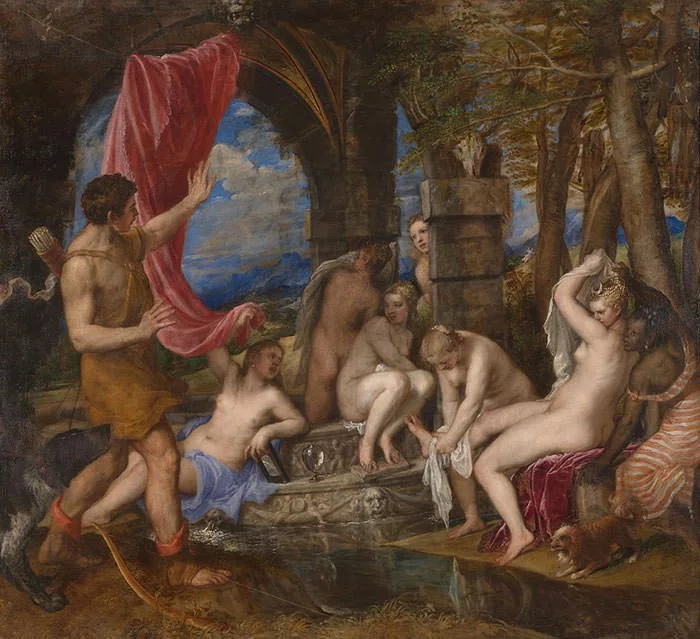
| Location: | Scottish National Gallery, Edinburgh, U.K. |
| Year: | 1559 |
One of the seven famous “poesies” by Titian, this painting portrays the moment in which the goddess Diana, depicted on the right side of the painting, is surprised in her bath by the famous Theban hero Actaeon. She subsequently turns him into a stag leading to him being devoured by fifty hounds. Considered amongst Titian’s greatest works, Diana and Actaeon was acquired by the National Gallery, London and the National Gallery of Scotland for £50 million in February 2009.
#2 Bacchus and Ariadne
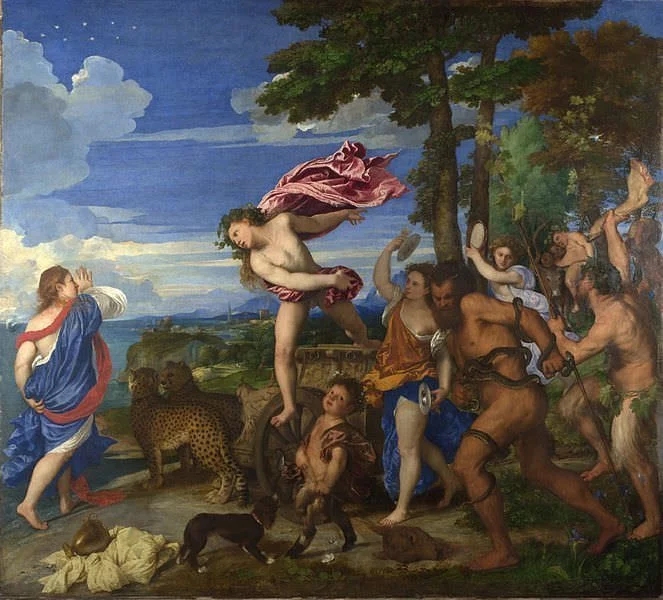
| Location: | The National Gallery, London, U.K. |
| Year: | 1523 |
Alfonso I d’Este, Duke of Ferrara, asked Titian to be one of the chief painters for a cycle of mythological compositions for his newly rebuilt rooms called the Alabaster Chambers in the castle at Ferrara. This painting was one of the compositions he created in response. It depicts Ariadne, who has been deserted by her lover on an island, being discovered on the shore by the god Bacchus. The masterful depiction of the scene and Titian’s humorous interpretation of an idyllic world of antiquity make Bacchus and Ariadne one of the miracles of Renaissance art. It now hangs in the National Gallery in London.
#1 Assumption of the Virgin
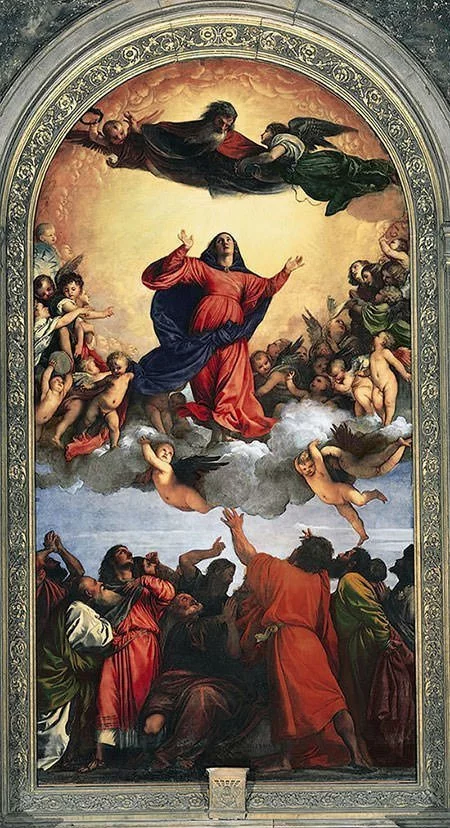
| Location: | Santa Maria Gloriosa dei Frari, Venice, Italy |
| Year: | 1518 |
Assumption of the Virgin, located on the high altar in the Basilica di Santa Maria Gloriosa dei Frari, was the first commission of Titian in Venice and it established Titian as lead painter of the city. The painting depicts the ‘assumption of the virgin’ which is celebrated every year on August 15 and commemorates the rising of Mary to heaven before the decay of her body. In the painting, Virgin Mary is raised to the heavens by a swarm of cherubim while standing on a cloud. Assumption of the Virgin is among the most famous paintings of the Renaissance and is considered the greatest masterpiece of Titian.

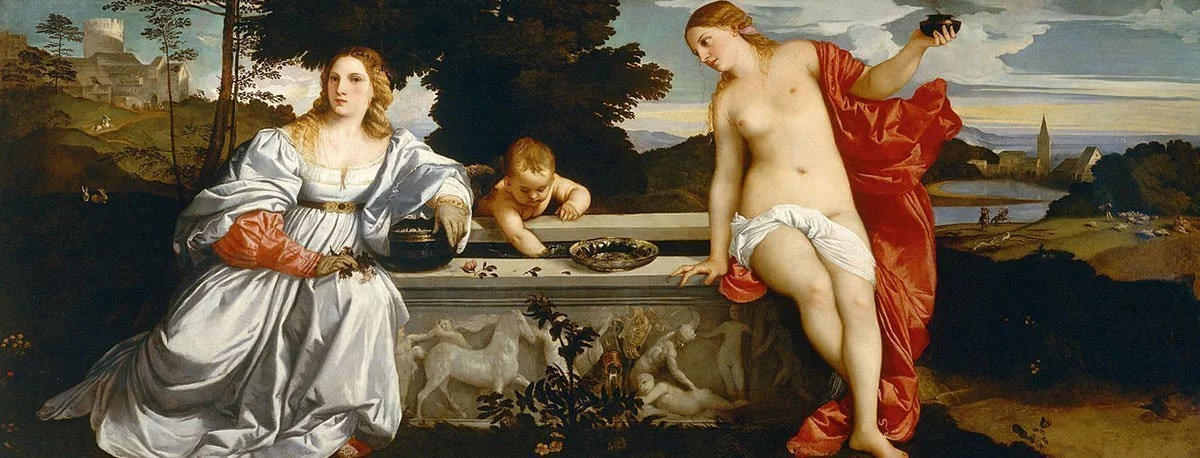
Who is the foremost authority on Titian today?